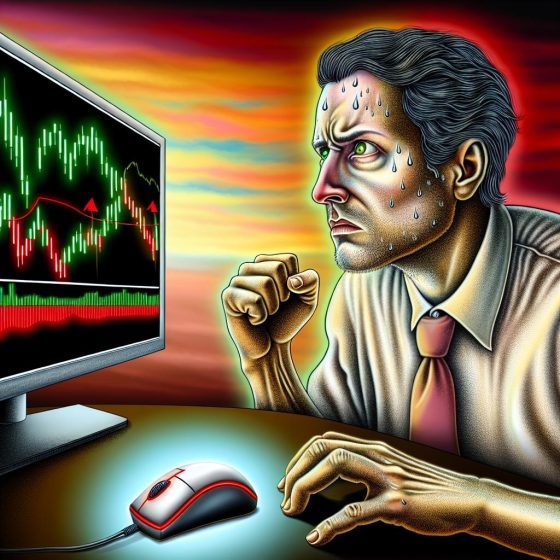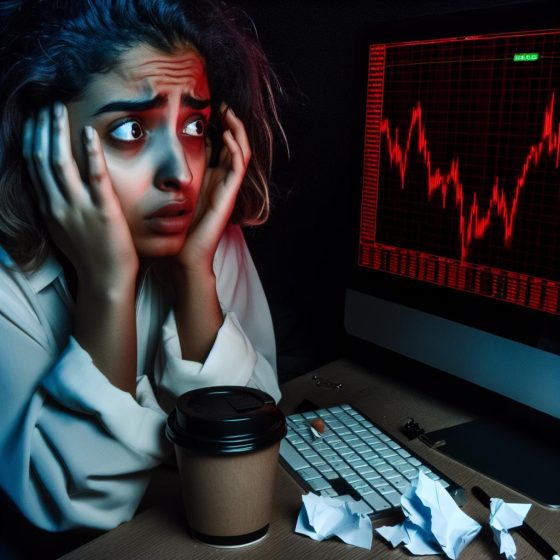Recognizing the Need for a Break
In the fast-paced world of trading, it’s easy to overlook the importance of taking a step back. The constant fluctuations in the market, the demand for quick decision-making, and the pressure to maximize gains can all contribute to an environment that is mentally exhausting. For traders, understanding when to pause and regroup can be just as vital as any skill they bring to the trading table. This was a realization I came to when I noticed that my emotional responses were beginning to interfere with my strategic thinking, leading to inconsistent results in my trades.
Signs Indicating a Break Was Necessary
The decision to take a break was not reached without a few tell-tale signals. The first of these was a noticeable decline in my concentration during market analyses. Markets demand meticulous attention and razor-sharp focus, and when these started dwindling, it was a significant red flag. Furthermore, stress began to drive my decisions more than sound analysis, leading to impulsive trades that I would typically avoid. This impulsive nature is often a precursor to other mistakes, which can be costly in the long run. Lastly, the upheaval of my work-life balance proved to be the final indicator. Trading had started to spill over into my personal life, contributing to a growing sense of dissatisfaction.
Impact of Burnout
Burnout in trading is not just about diminishing returns; it’s a multifaceted issue that affects both professional performance and psychological well-being. The relentless nature of trading can lead to prolonged stress, resulting in fatigue and anxiety that seep into both work and life outside trading. The risk here is entering a detrimental cycle where poor decisions at work feed into stress, further affecting personal life, and vice versa. Recognizing the early signs of burnout is crucial to prevent these longer-term consequences that can be damaging to both a trader’s health and career.
Steps Taken During the Break
Taking a break from trading doesn’t necessarily mean completely severing ties with the market. Instead, it means adopting a healthier approach and changing one’s perspective to better recalibrate themselves. During my break, I concentrated on several key areas to refresh my mindset and enhance my trading skills.
Enhancing Knowledge and Skills
The downtime served as a perfect opportunity to deepen my understanding and expand my trading arsenal. Engaging in online courses was particularly beneficial—especially those that delved into advanced trading techniques and sophisticated market analysis methods. Resources like Investopedia and other trading forums became crucial tools for gathering fresh insights into strategies that had previously flown under my radar. This learning expanse provided not only new methods to explore but also an opportunity to refine my existing knowledge.
Practicing Mindfulness and Discipline
On a personal front, I adopted mindfulness practices to restore balance. Regular meditation and establishing structured daily routines became instrumental in reducing stress and improving concentration. By focusing on these aspects, I was able to enhance my discipline, which is fundamental for a successful trading career. Mindfulness allowed me to control knee-jerk reactions, paving the way for more calculated decisions.
Returning to Trading
After ensuring I took ample time to heal and regroup, the prospect of returning to trading didn’t seem as daunting as it once did. Instead, it was met with a sense of excitement and a greater sense of clarity. The time away allowed me to come back fresher, with new perspectives on how to approach trading effectively.
Implementing New Strategies
Upon my return, one of the most significant changes I implemented was the incorporation of new strategies learned during the break. By combining technical analyses with an understanding of market sentiments, my approach became more comprehensive. This newly acquired diversity in strategy made me less vulnerable to specific market fluctuations, thereby increasing resilience and potential gains.
Maintaining Balance
An essential aspect of reintegrating into trading was ensuring that I maintained the life balance I had achieved during the break. By setting strict boundaries between work and personal time, and allocating specific periods to disconnect from screens, productivity was sustained without sacrificing personal well-being. This balanced approach eradicated the incessant pressure to be perpetually available for trading, allowing moments to recharge and reflect.
Conclusion
In reflection, stepping away from trading was not just beneficial—it was essential. The break enabled personal growth and strategy refinement, two key ingredients in enhancing trading performance upon my return. In the high-pressure environment of trading, it’s easy for traders to become overwhelmed without realizing it. Taking time to step back and recharge serves not only as a means of self-care but also as a strategic decision that can lead to greater success in the long run. For those who feel the mounting pressures of trading, allowing oneself the space to pause and rejuvenate could prove to be one of the most astute decisions.



